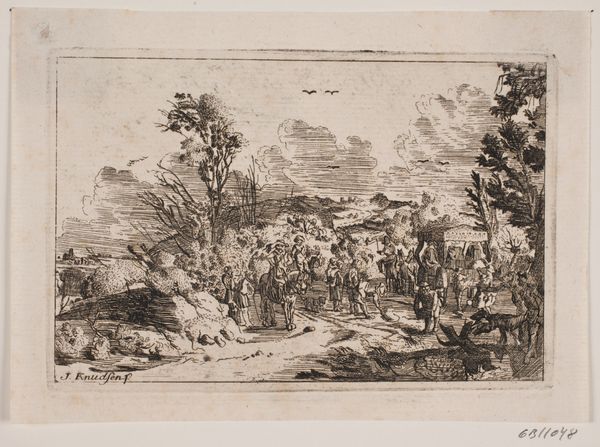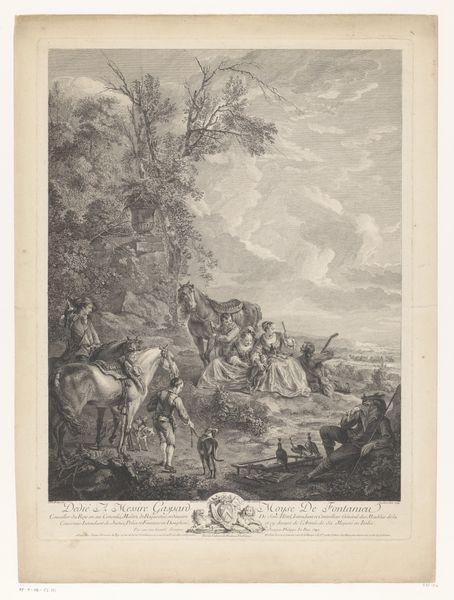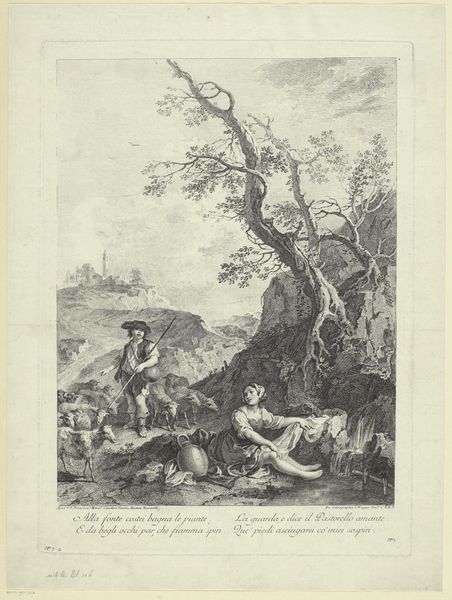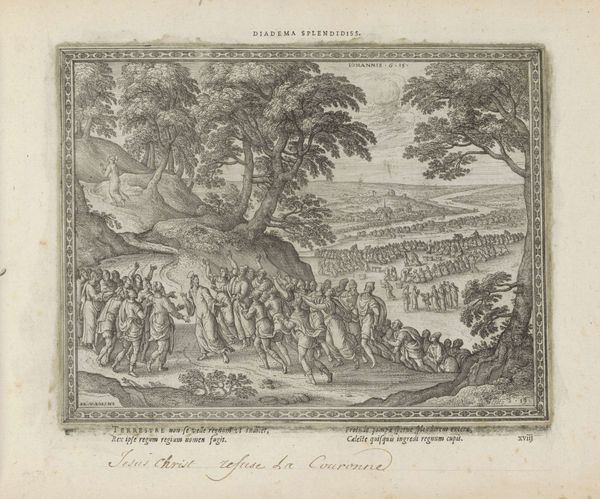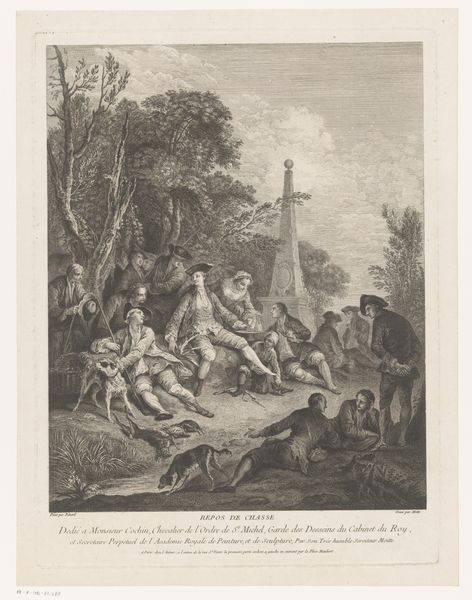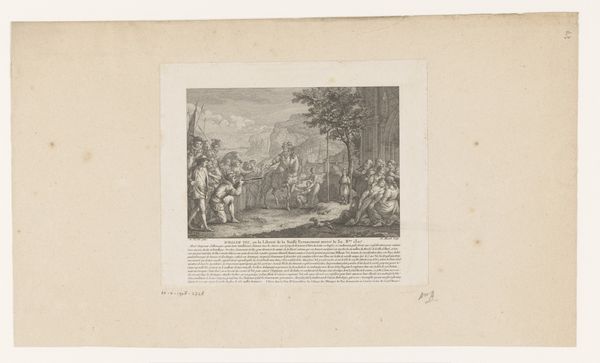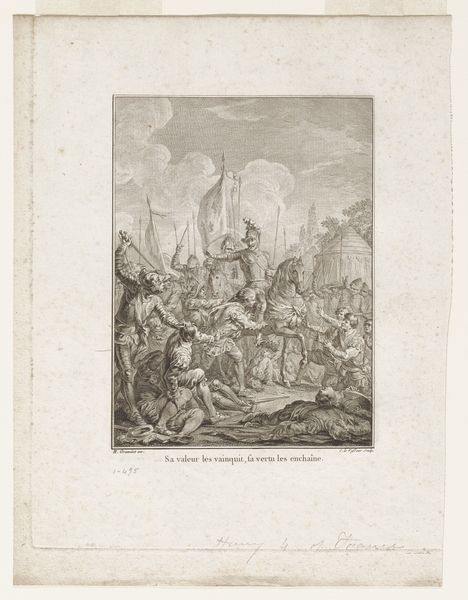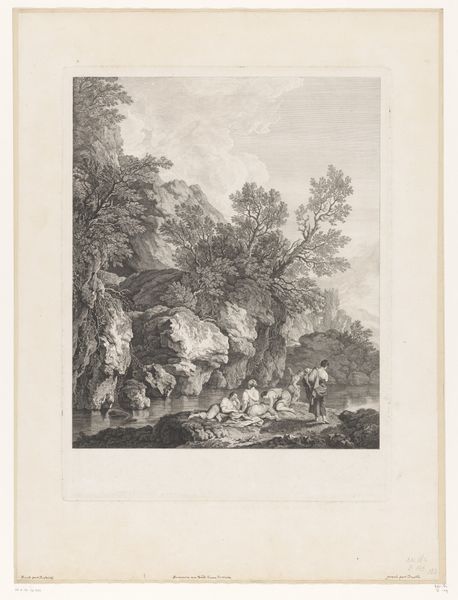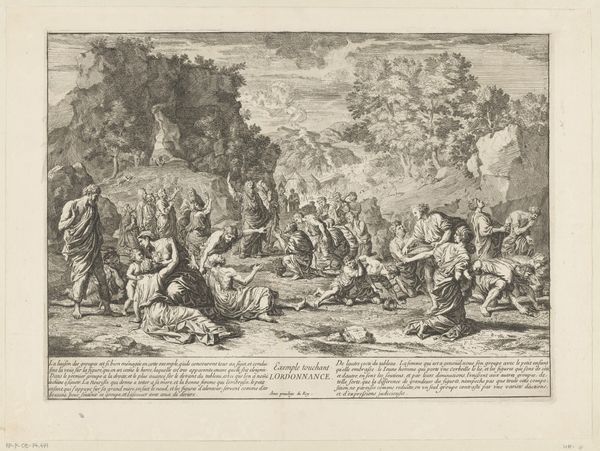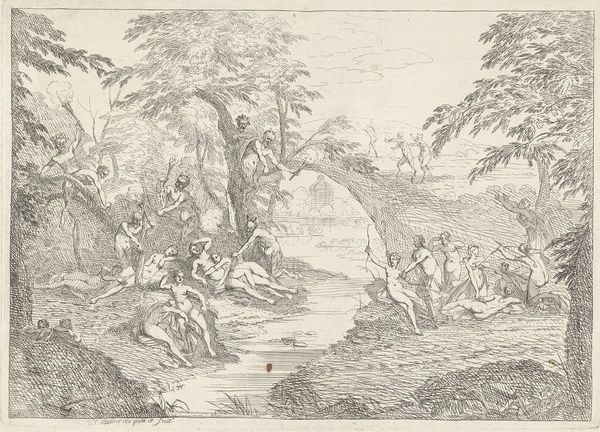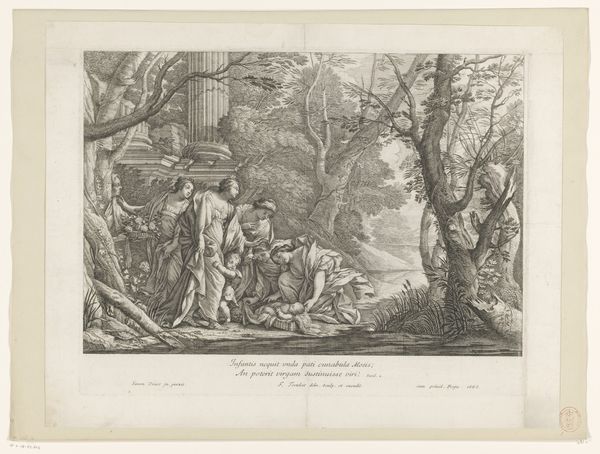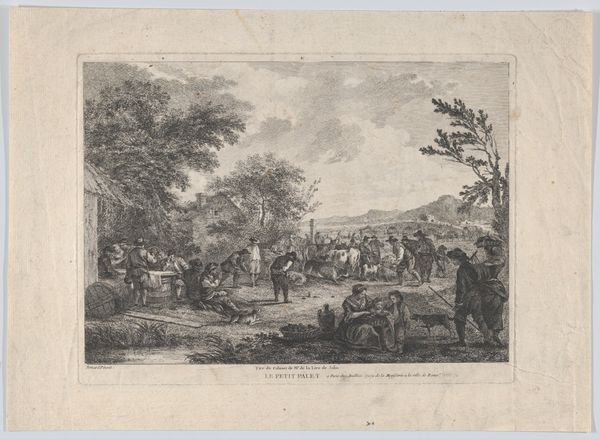
print, engraving
#
narrative-art
# print
#
landscape
#
romanticism
#
genre-painting
#
history-painting
#
engraving
Dimensions: height 338 mm, width 247 mm
Copyright: Rijks Museum: Open Domain
Editor: Here we have "Soldiers Warming Soup in a Camp," an engraving made in 1834 by Nicolas Toussaint Charlet, housed here at the Rijksmuseum. The scene is dominated by soldiers gathered around a fire. I find the detailed textures quite striking for an engraving. What aspects of the print do you find particularly noteworthy? Curator: I'm drawn to how the print foregrounds the materiality of war. Consider the process of engraving: the labor involved, the metal plate as a tool of reproduction, making this scene accessible to a wider audience, almost as a commodity itself. It brings an immediacy, don't you think? The soldiers themselves become workers, consuming their simple soup – fuel, in a way. How does it challenge your notion of romanticism, with its raw depiction of labor and consumption during wartime? Editor: I hadn't thought about the accessibility granted by engraving in that way. I was focusing more on the composition, especially the atmospheric perspective that gives it such a grand feeling. Are you saying that focusing on the 'making of' downplays the artistic intent? Curator: Not downplays, but contextualizes it. The act of creating prints, particularly engravings, wasn't necessarily seen as 'high art.' This connects to your remark on romanticism - could this then also be viewed as social commentary on the romantic idealisation of conflict? How the sausage—or in this case, the soup—is made? The soup is quite literally produced by their labor. Editor: I see what you mean. So, by focusing on the means of production, you’re emphasizing how this artwork reflects not just aesthetic preferences, but the economic realities of the time and, perhaps, challenging hierarchies? Curator: Exactly. And it makes us reconsider the artistic intention, placing the focus less on pure artistic inspiration, but more as evidence to understand 19th century warfare. It gives one a new perspective. Editor: That really shifts how I look at it. Thanks for pointing that out. Curator: My pleasure, that's what makes art history worthwhile!
Comments
No comments
Be the first to comment and join the conversation on the ultimate creative platform.
